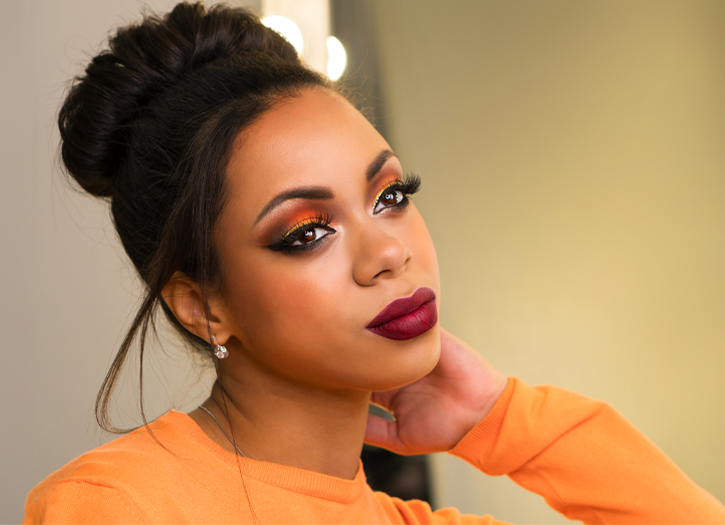Eye shadow (or eyeshadow) is a cosmetic applied primarily to the eyelids to make the wearer’s eyes stand out or look more attractive. Eye shadow can also be applied under eyes or to brow bones.Eye shadow can add depth and dimension to one’s eyes, complement one’s eye color, make one’s eyes appear larger, or simply draw attention to the eyes. Eye shadow comes in many different colors and textures. It is usually made from a powder but can also be found in liquid, pencil, cream or mousse form. Just like other trends, eyeshadow looks also have trends.
Many people use eye shadow simply to improve their appearance, but it is also commonly used in theatre and other plays, to create a memorable look, with bright, bold colors. Depending on skin tone and experience, the effect of eye shadow usually brings out glamour and gains attention. The use of eye shadow attempts to replicate the natural eye shadow that some women exhibit due to a natural contrasting pigmentation on their eyelids. Natural eye shadow can range anywhere from a glossy shine to one’s eyelids, to a pinkish tone, or even a silver look.
Eye shadow can be applied in a wide variety of ways depending upon the desired look and formulation. Typically application is done using fingers or brushes. The most important aspect of applying eye shadow, and makeup in general, is blending well. However, you must not forget to include a primer to limit the chances of creases in your eye shadow later.To remove eye shadow, a commercial eye makeup remover can be utilized, though a rich face wash will usually remove all traces of color. Generally it is easy to remove, and simple water and soap can be used. Eye shadow, eyeliner, and mascara may also be removed using baby oil. There are also makeup wipes that can be used.
Earliest evidence of a commercial product called ‘eye shadow’ dates to the 1910s in the United States. Cosmetics company founder Elizabeth Arden visited beauty salons in Paris in 1912, studying the products and techniques. In 1914 she introduced eye shadow to her own salons in the US. Eye shadow was advertised ‘Arden Eye Shadow’ in newspapers as part of the Arden Venetian Preparations range of cosmetics in 1919. The product was sold as ‘Eye Sha Do’ in 1922, but by the 1930s, eye shadow had become the common name used by Elizabeth Arden and other cosmetic companies such as Helena Rubinstein and Max Factor.
Eye shadow has gone through many different phases, for example during the 1920s when smoky eyes were in trend or in the 1930s when people added many colors to their eyeshadow looks.Eye shadows typically consist of four types of ingredients: base fillers, binders, slip and preservatives. In order to make eye shadow, there must be a balance between the fillers and binders. Binders help eye shadow adhere and stay attached to skin.







Add Comment
You must be logged in to post a comment.